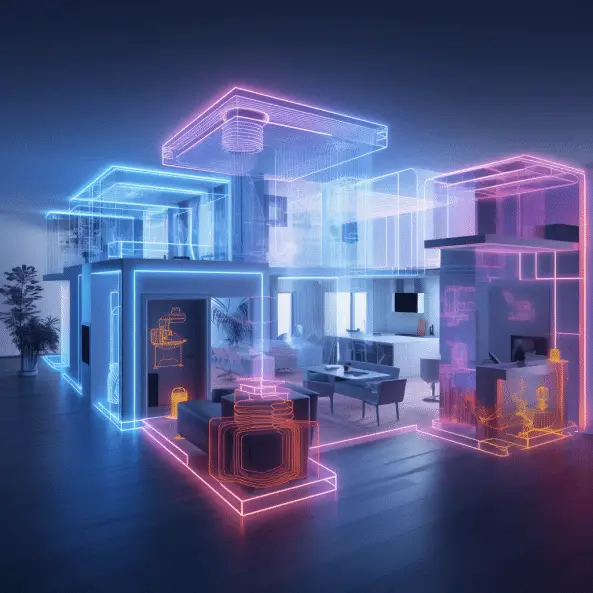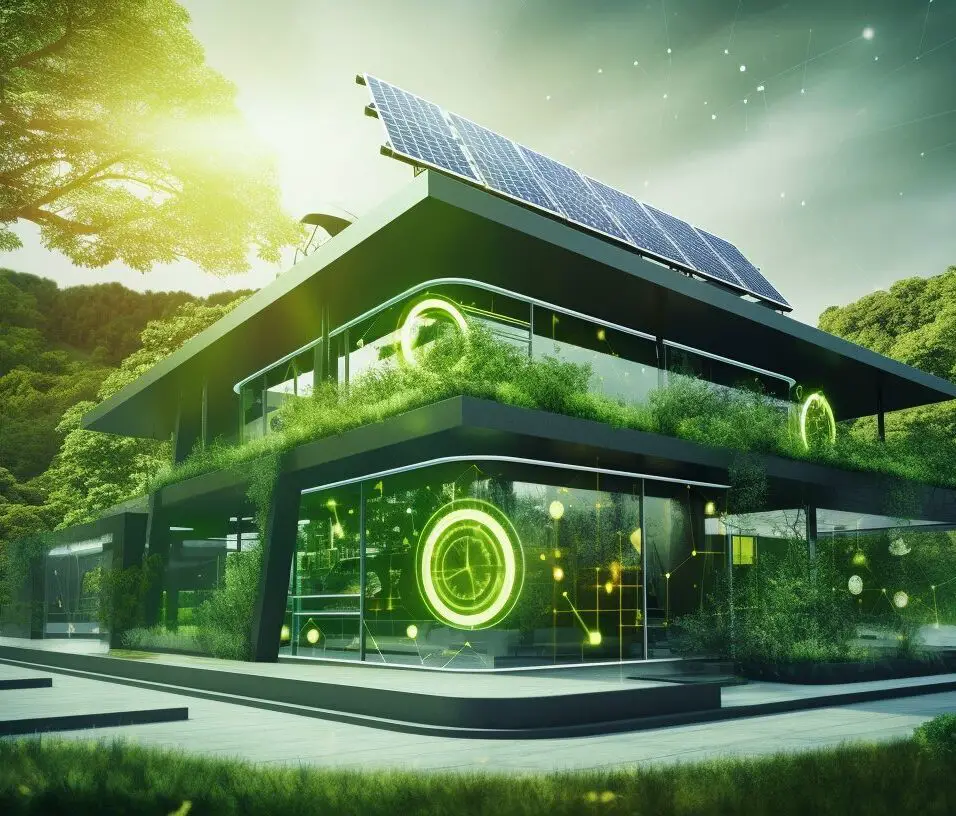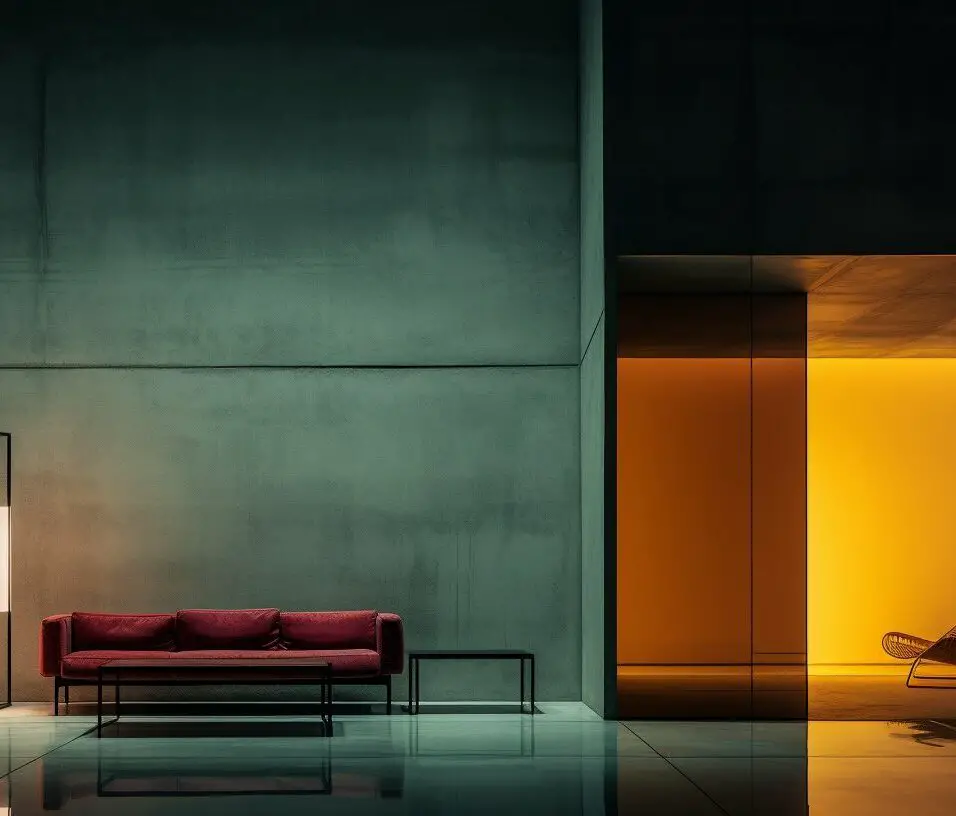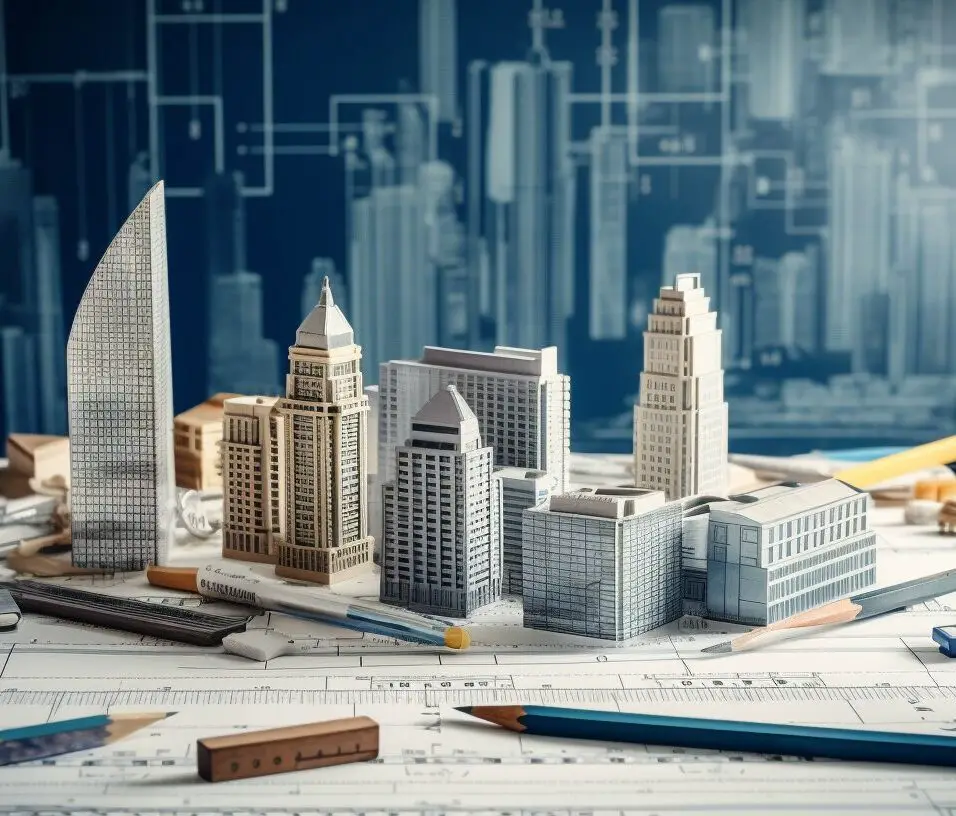Optimizing Thermal Comfort: Design Essentials and Strategies
Designing for thermal comfort is essential for creating spaces that promote human wellbeing and energy efficiency. To achieve optimal thermal conditions, several key elements should be considered. These include creating an efficient building exterior, managing insulation, solar gain, thermal inertia, and air ventilation, as well as taking into account individual preferences and utilizing energy-efficient technologies.
Key Takeaways:
- Efficient building exteriors play a crucial role in thermal comfort design by acting as a filter between the outdoor climate and the indoor environment.
- Proper insulation helps reduce heat gain in warm seasons and conserve heat in cold ones, and should be considered in both opaque and glazed areas of the building’s envelope.
- Solar gain can be controlled through factors such as building design and orientation, heat reflection percentage, and the presence of nearby shading elements.
- Thermal inertia, influenced by the materials and structure used, affects the temperature regulation and thermal response of a building.
- Proper air ventilation, whether through mechanical or natural means, is essential for managing air exchange and circulation with the outdoors.
- Considering individual preferences, such as providing temperature variations, allowing clothing adaptation, and enabling window operation, contributes to achieving personalized thermal comfort.
- Energy-efficient technologies like natural ventilation, solar shading, and intelligent building design can promote both thermal comfort and reduce energy consumption.
The Role of Building Exteriors in Thermal Comfort Design
The design of the building exterior plays a critical role in achieving thermal comfort by acting as a filter between the outdoor climate and the indoor environment. To create a well-balanced interior environment and reduce the use of mechanical systems, attention must be given to managing insulation, solar gain, thermal inertia, and air ventilation.
When it comes to insulation, it is important to consider both opaque and glazed areas of the building’s envelope. Insulating materials help reduce heat gain in warm seasons and conserve heat in cold ones. By carefully selecting the appropriate insulation level and materials for different parts of the building, a comfortable and energy-efficient indoor environment can be achieved.
Solar gain, which refers to the amount of heat gained from sunlight, is an important factor in thermal comfort design. The building’s design and orientation, ratio of opaque-to-glazed areas, heat reflection percentage, insulation level, and nearby shading elements all affect solar gain. By carefully considering these factors, the impact of solar gain can be managed to create an optimal thermal environment.
The Importance of Insulation in Thermal Comfort Design
| Area | Insulation |
|---|---|
| Opaque areas | High-quality insulation materials |
| Glazed areas | Low-emissivity (Low-E) coatings or films |
Thermal inertia, which refers to how slowly the temperature of a building reaches that of its surroundings, is controlled by the materials and type of structure used in the architecture. Different materials have varying thermal inertia properties. By selecting materials with suitable thermal inertia characteristics, the interior temperature can be regulated efficiently to enhance thermal comfort.
- High thermal inertia materials: Stone, concrete
- Low thermal inertia materials: Lightweight materials, such as wood
Proper air ventilation is crucial for maintaining thermal comfort. Mechanical or natural ventilation systems can be employed to manage air exchange and circulation with the outdoors. By ensuring a sufficient supply of fresh air and controlling humidity levels, the indoor environment can be kept comfortable and healthy.
In summary, the design of building exteriors plays a vital role in achieving thermal comfort. By considering insulation, solar gain management, thermal inertia, and air ventilation, buildings can be designed to provide a well-balanced interior environment while minimizing energy consumption for heating and cooling. By utilizing energy-efficient technologies and incorporating individual preferences, optimal thermal comfort can be achieved, contributing to human wellbeing and energy efficiency.
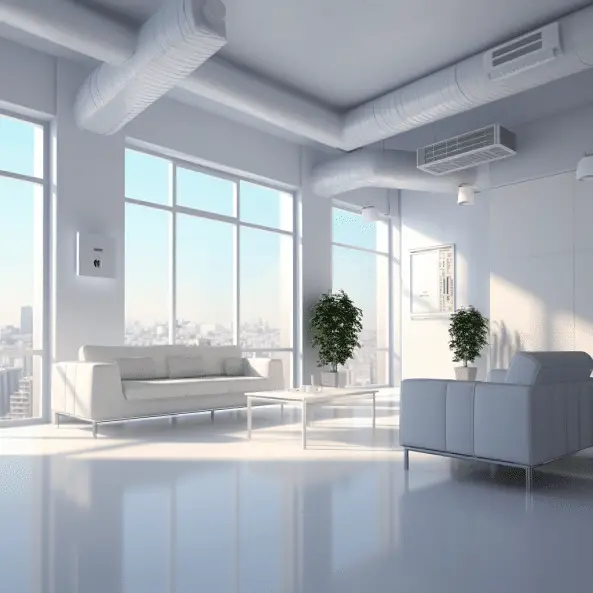
Importance of Insulation in Thermal Comfort Design
Proper insulation is crucial in thermal comfort design as it helps regulate heat gain and loss in both opaque and glazed areas of the building. Insulation acts as a barrier, preventing unwanted heat transfer between the indoor and outdoor environments. By effectively managing insulation, buildings can maintain a comfortable temperature, reduce energy consumption for heating and cooling, and enhance overall thermal comfort for occupants.
In opaque areas of the building’s envelope, such as walls and roofs, insulation helps to reduce heat gain in warmer seasons and conserve heat in colder seasons. It acts as a buffer against external temperature fluctuations, keeping the interior space more stable and comfortable. By choosing insulation materials with appropriate thermal resistance values, building designers can optimize energy efficiency and create a more sustainable living or working environment.
In glazed areas, such as windows and skylights, insulation plays a crucial role in minimizing heat loss and preventing the formation of cold spots. By selecting double or triple glazing with low-emissivity coatings, the heat transfer through glazed surfaces can be significantly reduced, enhancing thermal comfort and maximizing energy savings. Additionally, proper sealing and insulation around windows and doors can also help reduce air leakage and drafts, further improving the overall energy efficiency of the building.
Insulation Recommendations
When considering insulation in thermal comfort design, it is important to choose materials with the appropriate insulation properties. The following table provides a summary of recommended insulation materials and their thermal resistance values:
| Insulation Material | Thermal Resistance (R-value) |
|---|---|
| Fiberglass Batt | R-3.1 to R-4.3 per inch |
| Spray Foam | R-3.6 to R-6.5 per inch |
| Cellulose | R-3.2 to R-3.8 per inch |
| Mineral Wool (Rockwool) | R-4.0 to R-4.3 per inch |
| Polyisocyanurate (Polyiso) | R-5.6 to R-8.0 per inch |
It is important to note that the recommended R-values depend on local climate conditions and building regulations. Consulting a professional to determine the appropriate insulation requirements is recommended.
Understanding Solar Gain in Thermal Comfort Design
Solar gain is an important consideration in thermal comfort design, and factors such as building design, orientation, and nearby shading elements can significantly impact the amount of heat absorbed by the building. To create spaces that maintain optimal thermal conditions, it is crucial to understand how solar gain affects the indoor environment.
When designing a building, the orientation and layout play a crucial role in determining the amount of solar radiation that reaches the interior. Buildings with a more favorable orientation, such as those with south-facing windows in the Northern Hemisphere, can take advantage of passive solar gain during the colder months. This can help reduce the reliance on mechanical heating systems and lower energy consumption.
Another important consideration is the use of shading elements. External shading devices, such as overhangs or louvers, can provide protection from direct sunlight and reduce solar heat gain. Strategic placement of shading elements can block the intense summer sun while still allowing for natural light and views. Additionally, trees or vegetation near the building can provide natural shading and further contribute to reducing solar gain.
| Design and Orientation | Heat Reflection | Nearby Shading Elements |
|---|---|---|
| Building design and orientation impact the amount of solar radiation that reaches the interior. | Heat reflection materials and coatings can help reduce solar heat gain. | Nearby shading elements, such as trees or external shading devices, can provide protection from direct sunlight. |
By carefully considering building design and orientation, incorporating shading elements, and utilizing heat reflection materials, architects and designers can effectively manage solar gain and create spaces that are thermally comfortable and energy-efficient.
Controlling Thermal Inertia for Optimal Thermal Comfort
Thermal inertia, influenced by the materials and type of structure used, plays a key role in regulating the temperature inside a building and achieving optimal thermal comfort. It refers to how slowly the temperature of a building reaches that of its surroundings, providing stability in the internal environment.
When selecting materials for construction, it is essential to consider their thermal properties. Materials with high thermal inertia, such as concrete or brick, absorb and store heat energy, resulting in slower temperature fluctuations. On the other hand, materials with low thermal inertia, like lightweight metals or timber, respond quickly to external temperature changes, leading to faster indoor temperature variations.
The type of building structure also affects thermal inertia. Massive construction systems, such as thick concrete walls or floors, enhance thermal inertia by providing a larger surface area for heat exchange. In contrast, lightweight construction systems, such as steel or timber frames, have lower thermal inertia due to their reduced mass.
| Material Type | Thermal Inertia Level |
|---|---|
| Concrete | High |
| Brick | High |
| Stone | High |
| Lightweight Metals | Low |
| Timber | Low |
By understanding how thermal inertia works and selecting the right materials and building structures, architects and designers can create spaces that maintain a more stable indoor temperature, reducing the need for excessive heating or cooling. This not only enhances the occupants’ thermal comfort but also contributes to energy efficiency and sustainability.
The Importance of Air Ventilation in Thermal Comfort Design
Adequate air ventilation is essential for maintaining thermal comfort, and it can be achieved through mechanical or natural means to ensure proper air exchange and circulation. Incorporating effective air ventilation systems in building design helps regulate temperature, humidity, and air quality, improving the overall comfort and wellbeing of occupants.
Mechanical ventilation involves the use of mechanical systems such as fans, air conditioners, and ducts to circulate and exchange air. This method allows for precise control of airflow and enables the removal of stale air, pollutants, and excess moisture. Mechanical ventilation systems are particularly important in buildings located in urban areas with high levels of outdoor air pollution or in spaces that lack access to natural ventilation.
“Proper air ventilation is crucial in thermal comfort design, as it directly impacts indoor air quality and the overall health and productivity of occupants.”
Natural ventilation, on the other hand, relies on natural forces like wind and temperature differences to facilitate airflow. It utilizes windows, vents, and other openings to let fresh air in and remove stale air. Natural ventilation not only provides a continuous supply of fresh air but also reduces the dependency on mechanical cooling and heating systems, leading to energy savings.
The building’s location
When considering air ventilation in thermal comfort design, factors such as the building’s location, climate, and the purpose of the space should be taken into account. Additionally, proper air distribution and balancing should be ensured to avoid cold or hot spots and maintain consistent temperatures throughout the building.
| Air Ventilation Methods | Advantages | Considerations |
|---|---|---|
| Mechanical Ventilation |
|
|
| Natural Ventilation |
|
|
In conclusion, the importance of air ventilation in thermal comfort design cannot be overstated. Well-designed air ventilation systems that offer sufficient air exchange and circulation contribute to maintaining optimal indoor air quality, temperature, and humidity levels. Whether through mechanical or natural means, proper air ventilation enhances occupant comfort, health, and productivity while reducing energy consumption. By considering the specific requirements of each building and providing effective air ventilation solutions, architects and designers can create spaces that promote a pleasant and healthy indoor environment.
Considering Individual Preferences in Thermal Comfort Design
Thermal comfort design must recognize and accommodate individual preferences to create environments where occupants may alter the temperature and optimize comfort. By adjusting temperature, people can tailor their environment. This can be done using changeable thermostats or zoning systems that manage building temperatures.
Clothing adaptability is another significant part of personal preferences. By dressing comfortably, occupants can better regulate their body temperature and feel more relaxed. Providing lockers or coat racks might help people dress for the weather.
Window operation is also important for personalization. Some like breezes and natural light, while others like a regulated environment. Providing readily opened and closed windows with appropriate shading components lets occupants customize their thermal environment and improve comfort.
Table: Factors for Accommodating Individual Preferences in Thermal Comfort Design
| Factors | Methods of Accommodation |
|---|---|
| Temperature variations | Adjustable thermostats, zoning systems |
| Clothing adaptation | Providing wardrobe options |
| Window operation | Easy-to-use windows with shading elements |
By considering individual preferences in thermal comfort design, we can create spaces that prioritize the wellbeing and satisfaction of occupants. This not only enhances the overall comfort levels but also promotes productivity and overall satisfaction. As we strive to design buildings that are energy-efficient and sustainable, it is imperative to remember that individual comfort plays a vital role in achieving these goals.
Energy-Efficient Technologies in Thermal Comfort Design
Energy-efficient technology like natural ventilation, solar shading, and intelligent building design can improve thermal comfort and reduce energy use. These technologies are essential for a healthy, comfortable interior environment.
Natural ventilation uses airflow to adjust temperature and air quality at cheap cost. Buildings can reduce mechanical cooling by carefully arranging windows and ventilation openings to capture cross winds. Overhangs, blinds, and awnings can further reduce solar heat gain by blocking direct sunlight during peak hours. This keeps indoor temperatures acceptable and reduces energy use for cooling.
Advanced technologies optimise energy usage and occupant comfort in intelligent building design. Using occupancy and environmental data, smart sensors and automated control systems may change lighting, heating, and cooling. Integrating these systems allows buildings to dynamically adjust to occupancy and weather changes, saving energy and improving thermal comfort. Low-emissivity glass and high-performance insulation limit heat transmission and improve thermal resistance, improving energy efficiency.
| Energy-Efficient Technologies | Benefits |
|---|---|
| Natural Ventilation | – Enhances air quality – Reduces reliance on mechanical cooling – Facilitates natural airflow |
| Solar Shading | – Manages solar heat gain – Reduces cooling load – Enhances visual comfort |
| Intelligent Building Design | – Optimizes energy consumption – Improves occupant comfort – Responds to changing conditions |
| Energy-Efficient Materials | – Reduces heat transfer – Improves thermal resistance – Enhances overall energy efficiency |
By implementing these energy-efficient technologies, buildings can significantly reduce their carbon footprint, improve occupant satisfaction, and achieve sustainable thermal comfort. It is essential to consider these strategies during the design and construction process to create spaces that prioritize human wellbeing and energy efficiency.
Achieving Thermal Comfort and Energy Efficiency
By considering all the criteria and using energy-efficient technologies, buildings can be designed with optimum thermal conditions and low energy use. Optimal thermal comfort requires a well-designed building façade with insulation, solar gain management, thermal inertia control, and air ventilation.
Insulation keeps temperatures comfortable by limiting heat gain in warm seasons and preserving heat in cold ones. Insulation is crucial on opaque and glazed building envelopes. No matter the weather, this keeps the indoor environment constant and comfortable.
Thermal comfort design also involves solar gain management. Building orientation, opaque-to-glazed ratio, heat reflection %, insulation level, and surrounding shading components affect solar heat gain. Designers may build year-round comfortable spaces by considering these characteristics.
The temperature of a building reaches
Design materials and structure can regulate thermal inertia, or how slowly a building’s temperature rises to its surroundings. The perfect blend of thermal inertia materials can regulate temperature and improve thermal comfort.
In addition to insulation and solar gain management, air circulation is crucial for thermal comfort. Maintaining healthy circulation and controlling indoor and outdoor air exchange through mechanical or natural ventilation systems can make indoor spaces more comfortable.
Finally, thermal comfort preferences and expectations must be considered. Giving people the ability to adjust their temperature, clothing, and windows can improve their comfort and pleasure.
Energy-efficient solutions like natural ventilation, solar shading, and intelligent building design can optimize thermal conditions and reduce heating and cooling energy. These ideas can help design buildings that promote energy efficiency and human health.
| Key Factors in Achieving Thermal Comfort and Energy Efficiency |
|---|
| Efficient building exteriors with proper insulation, solar gain management, thermal inertia control, and air ventilation |
| Consideration of insulation properties in both opaque and glazed areas of the building’s envelope |
| Optimal management of solar gain through building design and orientation, heat reflection percentage, and nearby shading elements |
| Selection of materials and structures that regulate thermal inertia and temperature variations |
| Implementation of proper air ventilation systems, whether mechanical or natural |
| Consideration of individual preferences and expectations, allowing for personalization of the thermal environment |
| Incorporation of energy-efficient technologies like natural ventilation, solar shading, and intelligent building design |
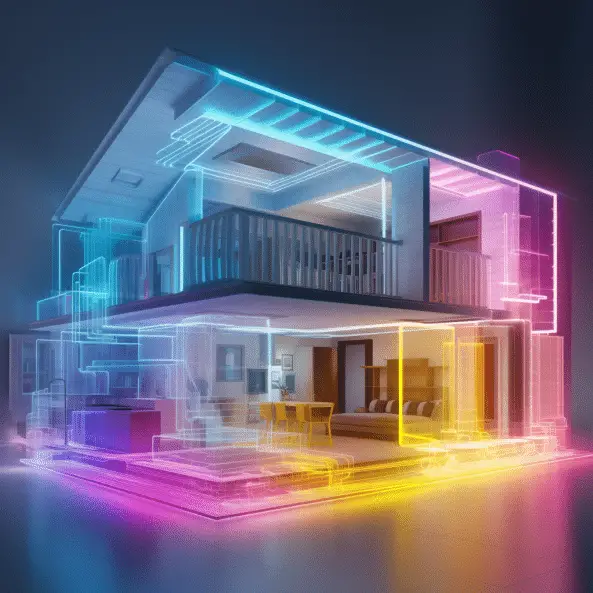
Conclusion
Buildings that promote human health and energy efficiency must prioritize thermal comfort. Consider building exteriors, insulation, solar gain, thermal inertia, air ventilation, and individual preferences to optimize thermal conditions and reduce energy usage.
An effective building façade filters the outdoor atmosphere into the internal environment. Balanced interiors and reduced mechanical system use can be achieved by regulating insulation, sun gain, thermal inertia, and air ventilation.
Thermal comfort design requires consideration of insulation on both opaque and glazed building envelopes. Energy efficiency is improved by reducing heat gain in warm seasons and conserving heat in cold ones.
In addition to insulation, building design, orientation, heat reflection percentage, neighboring shade components, and opaque-to-glazed ratio affect solar gain. Understanding and managing solar gain affects energy use and thermal comfort.
Thermal inertia, influenced by architecture materials and structure, slows a building’s temperature rise. Selecting materials with sufficient thermal inertia helps designers regulate temperature and create comfortable indoor settings.
Air ventilation is another important thermal comfort design factor. Air exchange and circulation with the outdoors, whether mechanical or natural, improves tenant comfort and health.
Variations in temperature
Lastly, individual preferences should not be overlooked in the design process. Providing variations in temperature, allowing people to adapt their clothing, and enabling window operation can empower occupants to personalize their thermal environment and increase satisfaction.
By considering these key elements and utilizing energy-efficient technologies such as natural ventilation, solar shading, and intelligent building design, it is possible to create spaces that promote optimal thermal conditions and reduce energy consumption for heating and cooling.
Designing for thermal comfort is an investment in human wellbeing and energy efficiency. By prioritizing the needs of occupants and utilizing innovative strategies, buildings can provide a comfortable and sustainable environment for all.
FAQ
Q: How important is insulation in thermal comfort design?
A: Insulation is crucial in thermal comfort design as it helps reduce heat gain in warm seasons and conserve heat in cold ones. It should be properly managed in both opaque and glazed areas of the building’s envelope.
Q: What factors influence solar gain in thermal comfort design?
A: Solar gain is influenced by factors such as building design and orientation, heat reflection percentage, and the presence of nearby shading elements. These factors determine the amount of solar heat that enters the building.
Q: What is thermal inertia and how does it affect thermal comfort?
A: Thermal inertia refers to how slowly the temperature of a building reaches that of its surroundings. It is influenced by the materials and type of structure used in the architecture. Different materials have varying thermal inertia properties, which can affect the thermal response of the building.
Q: Why is air ventilation important in thermal comfort design?
A: Proper air ventilation is essential in thermal comfort design to manage air exchange and circulation with the outdoors. It can be achieved through mechanical or natural ventilation and helps maintain a well-balanced indoor environment.
Q: How can individual preferences be considered in thermal comfort design?
A: Individual preferences can be considered by providing variations in temperature, allowing people to adapt their clothing, and enabling occupants to operate windows. This allows individuals to personalize their thermal environment according to their preferences.
Q: What are some energy-efficient technologies used in thermal comfort design?
A: Energy-efficient technologies used in thermal comfort design include natural ventilation, solar shading, and intelligent building design. These technologies help promote both thermal comfort and reduce energy consumption for heating and cooling.
Q: How can buildings achieve optimal thermal comfort and energy efficiency?
A: Buildings can achieve optimal thermal comfort and energy efficiency by considering all the key elements mentioned above, such as insulation, solar gain management, thermal inertia control, air ventilation, individual preferences, and utilizing energy-efficient technologies. By doing so, they can provide good thermal conditions while minimizing energy consumption.



